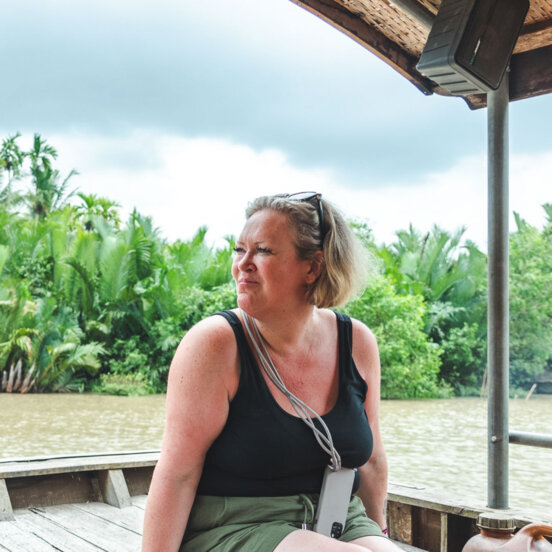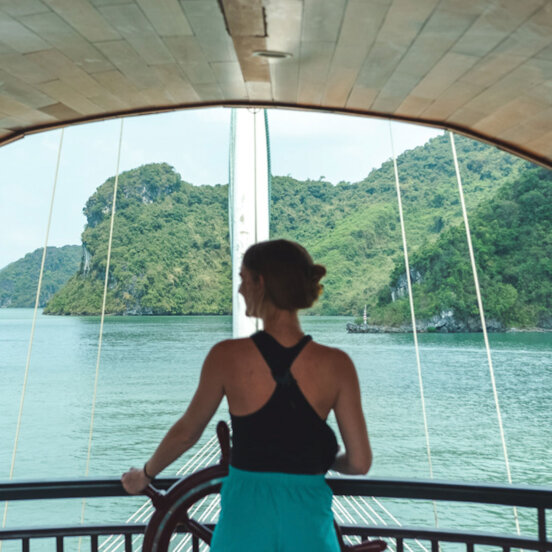Eat, love, draw: Inside the vibrant world of Brazilian artist Camila Pinheiro

I always dreamed of being an illustrator because my mother is an artist. In the end, it happened almost by accident. I began my career working in merchandising for the high-fashion labels such as Dior here in Brazil and I also studied at the Marangoni in Milan. This led me to work as a “cool hunter” (yes, that really is a job) for various luxury brands around the world.
It was an exciting role that was all about spotting new trends and innovations. Often I’d work with famous photographers who’d see my sketches and encourage me to become an illustrator. I didn’t pay attention at the time, but when I became pregnant with my first child in 2013, I realised motherhood wouldn’t suit the demands of my old life. I simply couldn’t be everywhere, doing everything all at once.

My drawings are snapshots of Brazilian life – warm by nature
So, when my son José arrived, I started to draw. I didn’t expect anything to come out of it – I was just sketching for the love of it – but I posted some illustrations on Instagram and everything grew from there.
I later studied at the Design School of São Paulo and set up my own studio, working for art fairs, galleries and private collections. I really enjoy the creativity of the work and the fact that it allows me to be a mum at the same time (I now have a daughter, Mariana, too).
My drawings are typically snapshots of Brazilian life, in all its soulful exuberance. Brazilians are very warm and people-orientated by nature; we love to be around friends and family, and we have a very mixed culture, too.

There’s no party in the world like a Brazilian party
Here in São Paulo, for example, you’ll find Japanese and Italian influences, then we also have a strong Afro-Brazilian heritage – particularly to the northeast of the country, in states such as Bahia. This all comes together in a rich fusion of music, dance, art and cuisine. There’s no party in the world like a Brazilian party.
Because of my background in fashion, I like to draw women in sun-filled beach scenes, or against a backdrop of tropical fruit or jungle landscapes. Clients know me for my ebullient use of colour, and it’s something I love to play around with – almost more than the drawing process itself. With the right colours, the entire mood of a piece shifts.

Colour is something that brings us together
My mother’s art is very different from mine – I’m more of an illustrator, whereas her style changes (she’s in an abstract phase right now). Colour, however, is something that brings us together; we have a lot of fun experimenting with new combinations and ideas.
I also get inspired by nature. Two hours away from São Paulo, you’ll find the mountain city of Pindamonhangaba, which is where my in-laws live. It’s quite off the radar. I am always struck by the astonishing level of wildlife and hiking trails there; along with vineyards and local restaurants serving seasonal, farm-to-fork cheeses and meats.

Water symbolises this moment of rebirth and freedom for me
I am very much drawn to water in my art, too. Brazil, of course, is famous for its beautiful beaches and I adore diving into the open waves. It’s come to symbolise this moment of rebirth and freedom for me, and I think you can see that in my work. As I swim, I feel this energy sweep over me, fuelling my soul.
When I’m on the beach, I might take notes or photos, or bring a sketchbook with me. But I also have a good visual memory, which helps certain tableaus stay in my mind. The things that I draw are not always what I see in front of me, either. Instead, they reflect a certain place or mood that I want to be in.
For example, if I’ve been up with my baby half the night, I might start drawing – and through that process, I start to feel better. Illustration for me is like therapy: it can vanish away tiredness and take me to my favourite places, like a Paraty island beach.

The town of Paraty has a strong creative spirit
The town of Paraty, in fact, is one of my favourite places in the whole of Brazil. Poised on the country’s southeast coast between São Paulo and Rio, the Unesco town is filled with colourful houses and artist studios.
It has a strong creative spirit; I love the Festa Literária Internacional de Paraty, which sees authors, artists, musicians and filmmakers gather together every year at the beautiful Pousada Literária (a historic oasis-style retreat, with a bookstore-café that visitors love). There are also many fantastic galleries, restaurants and artisan boutiques set between the charming, cobbled streets, too.
The beauty of Paraty is that it’s surrounded by a maze of secret islands with rainforest bars and hidden beaches. The best thing to do is get a táxi-boat driver to take you around the Bay of Paraty; the local boatmen know all the best places to stop for secluded swimming and golden shores. One of my favourite islands there is Crepúsculo (meaning “twilight”): it was a filming location for the first Twilight Saga film; it’s unbelievably scenic.

In Rio, people spend a lot of time of the beach
Moving up the coast to Rio de Janeiro, you’ll find the vibe is very easygoing. If you want to adopt the Cariocan way of life, you’ll spend a lot of time on the beach, playing volleyball or drinking água de coco (coconut water) at a juice bar. You might well pop by a boteco, too – friendly neighbourhood bars with snacks, such as pastéis filled with creamy chicken and cheese, coxinha croquettes and ice-cold caipirinhas.
Come evening, you’ll want to put on your dancing shoes at a samba club in the lively Lapa district. Oh, and you must try visiting the pool at the Copacabana Palace hotel; it’s iconic and steeped in history. The terrace at the Mirante do Arvrã hotel at the summit of the Vidigal favela is worth a trip, too: it has incredible views over Leblon and Ipanema beaches.

Above all, Brazil is a place of vibrancy and colour
As for my hometown of São Paulo, you have to try coxinha at the Bar da Dona Onça, located in Edificio Copan – an iconic building designed by Brazilian architect Oscar Niemeyer. For fantastic coffee and pão de queijo (Brazilian cheese bread), head to the Italian bakeries of Bixiga, a historic immigrant neighbourhood. Café Basilicata is one of our favourite places for breakfast and there’s also an open market there on Sundays with antiques, samba music and street food.
Meanwhile, open markets such Praca Benedito Calixto are great for arts and crafts, and the evocative Bar dos Arcos – an underground drinking den below the magnificent Municipal Theatre, that’s a must for evening cocktails.
Above all, Brazil is a place of vibrancy and colour; it’s a feeling that’s rooted in my art but anyone can sense it. It’s in the air here from the moment you arrive.
Join the party in Brazil on a group adventure with Flash Pack and other like-minded solo travellers.
Got a story or adventure that could inspire a solo traveller like you? Tag @flashpack on social or email [email protected] to be featured.
Images: courtesy of Camila Pinheiro










